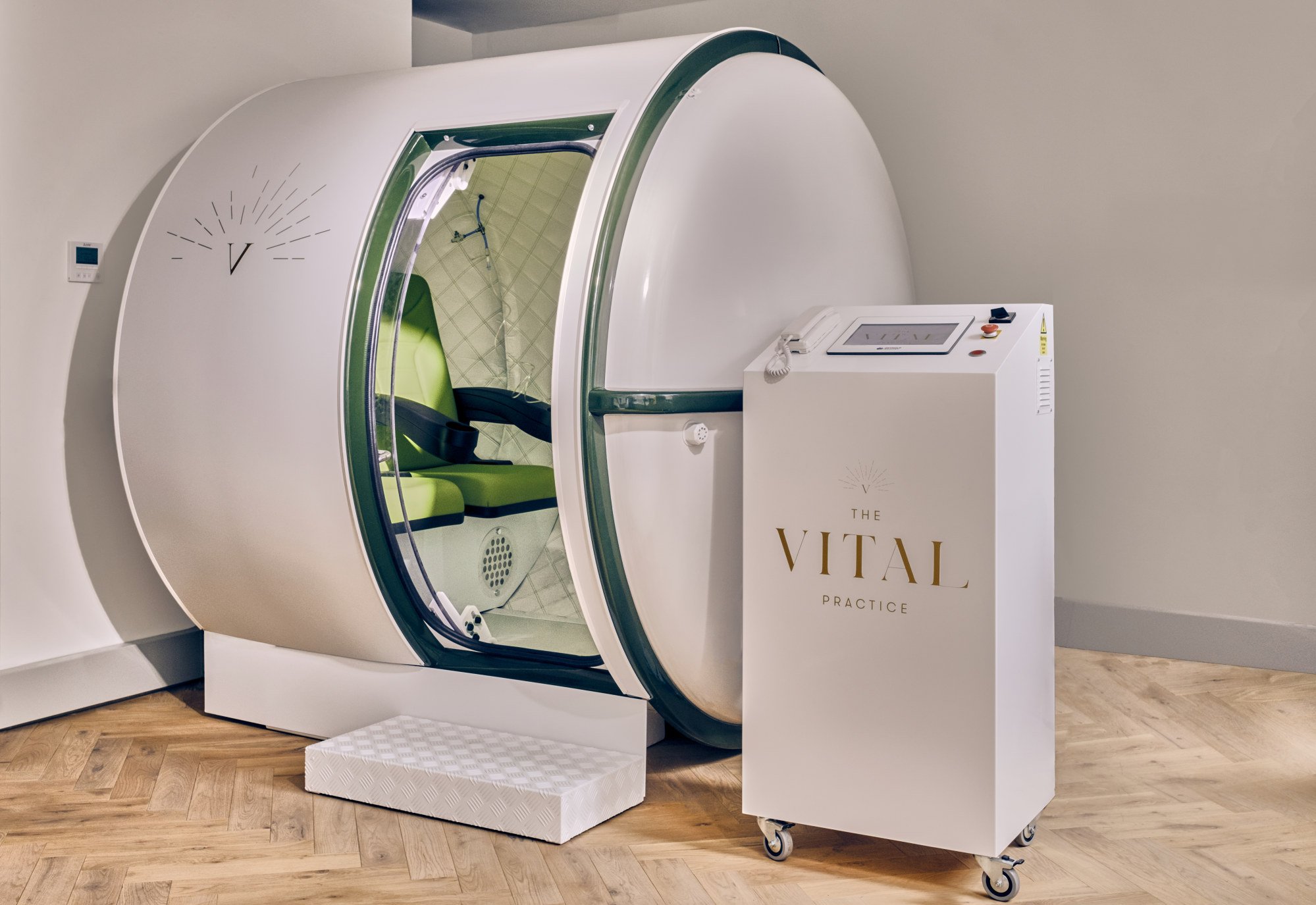Could HBOT help someone eliminate cancer from their bodies? Amberin Fur, who goop by Gweneth Paltrow (a homespun weekly newsletter) labeled as London’s best osteopath, seems to think so. It made a world of difference in her mother.
When osteopath Amberin Fur’s mother was awaiting surgery for colon cancer in 2018, Fur set out to do everything in her power to improve the prospects of a swift recovery.A multidisciplinary healer who believes in a holistic approach to well-being, Fur turned to hyperbaric oxygen therapy (HBOT). HBOT is the supply of pure oxygen under pressure in a chamber. Breathing close to 100 per cent oxygen increases oxygen supply to the blood and tissues; since wounds need oxygen to regenerate tissue, studies show that time spent in the chamber can speed wound healing.
Fur’s mother had 10 60-minute sessions of HBOT before the surgery, and about 10 more after it.
“We wanted to create an environment in which her body was stronger, going into the operation,” Fur says.The benefits from HBOT were immediately obvious in her mother’s case, in which the HBOT increased cellular energy production – the reaction of glucose and oxygen to create adenosine triphosphate that provides energy – to alleviate pain and fatigue.
“With the cancer she was so listless. I would come to pick her up for an HBOT session and she would be fighting me, ‘Oh no, I can’t be bothered’. Afterwards she would come bouncing out of the chamber asking, ‘Shall we go shopping?’”It was all the anecdotal evidence Fur needed. “It added fuel to my fire of understanding” of HBOT, she says.
“We’re not simple musculoskeletal creatures, that’s why the different modalities have always intrigued me,” she says. “Osteopathy is not just, oh, you’ve hurt your elbow, it’s how your body processes the external with the internal, your history, any injuries you’ve had; it’s in context with the rest of the body and its history.”Last year she established The Vital Practice in London’s Mayfair district. It’s a multidisciplinary clinic bringing together a variety of approaches to support her patients’ health.
Fur has always used HBOT in her osteopathy work, influenced by meeting and working with physiotherapist and hyperbaric expert Dr Robert Pender, known for introducing HBOT to the UK.
Impressed by HBOT’s track record in treating autism, strokes, chronic pain, Alzheimer’s, dementia, brain damage, cancer, and more recently, long Covid, she says the benefits go above and beyond its classical use – treating divers with the bends, and helping diabetics heal injuries.
“When you look at what your cells need to heal, oxygen is key. We put the body into the most optimum position by hyper-oxygenating it, so its inherent healing mechanisms can be triggered to improve performance and function optimally,” says Fur.“Normally you get 21 per cent oxygen in the atmosphere; in the pressurised chamber you get close to 100 per cent oxygen. The pressure in the chamber drives [more] oxygen into the plasma, which can penetrate areas the red blood cells cannot.”The Vital Practice has a two-seater hyperbaric chamber, which has been a core offering to patients along with osteopathy, functional medicine, photobiomodulation therapy (PBM) and light therapy (LLLT), both of which use specific wavelengths of red and near-infrared light to help the body heal.
Now about half of her patients daily show an interest in HBOT for themselves or family – some have even been inspired to install hyperbaric chambers in their own homes.
The two-seater HBOT chamber at The Vital Practice in London, the UK. Photo: Amberin Fur
Fur says the benefits of HBOT extend beyond healing, and can improve brain function. She points to a study from Israel performed on healthy able-bodied participants, comparing their ability to perform multitasking both in and outside the chamber.
“It showed a clear indication of better response times in single and double tasks within the HBOT chamber,” she says.Based on the study, she says: “Hyperoxygenation impacts not only longevity, but performance and brain optimisation, thus quality of life.”
Many patients use HBOT for anti-ageing, says Fur. Studies have indicated an increase in stem cell proliferation of as much as 800 per cent after HBOT, which gives rise to the growth of new blood vessels and nerves. This can repair areas with few blood vessels – a result of the ageing process.
“The essence is that cells require oxygen for energy, and a trigger to induce stem cell proliferation,” she says. HBOT provides that oxygen to the system. The oxygen is delivered to the blood, where it can diffused through tissue and hyper-oxygenate the system.Fur stresses that HBOT is not a cure. “There is no silver bullet for anything; change takes perseverance.”
Yet she sees the proof that HBOT works in her mother’s face. Five years on, she is fighting fit.
Article cited from LifeStyle. Read more…

